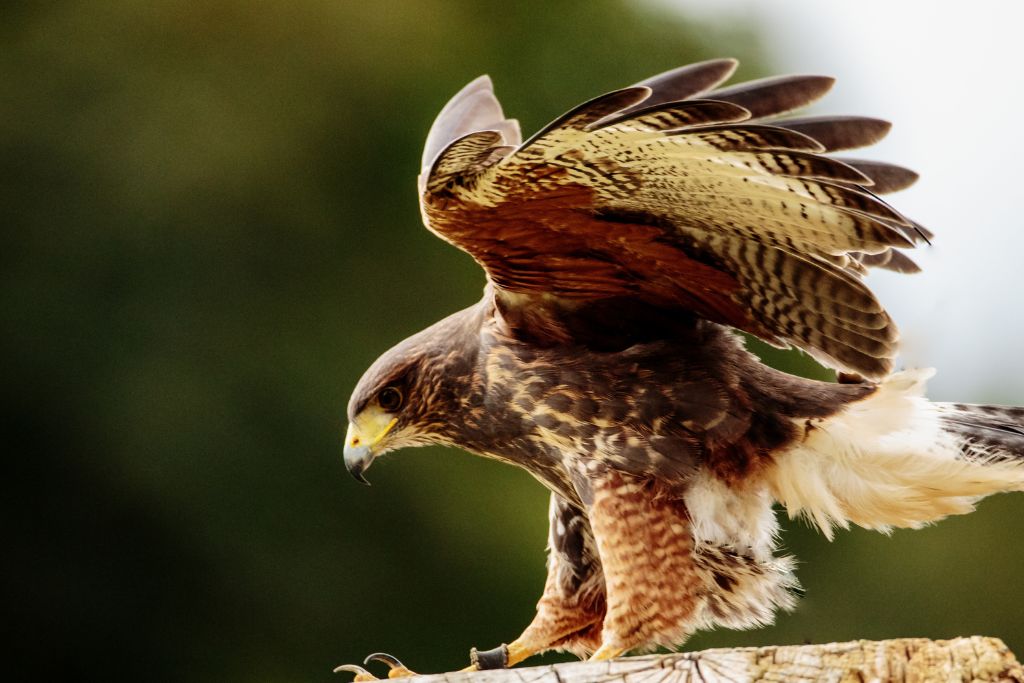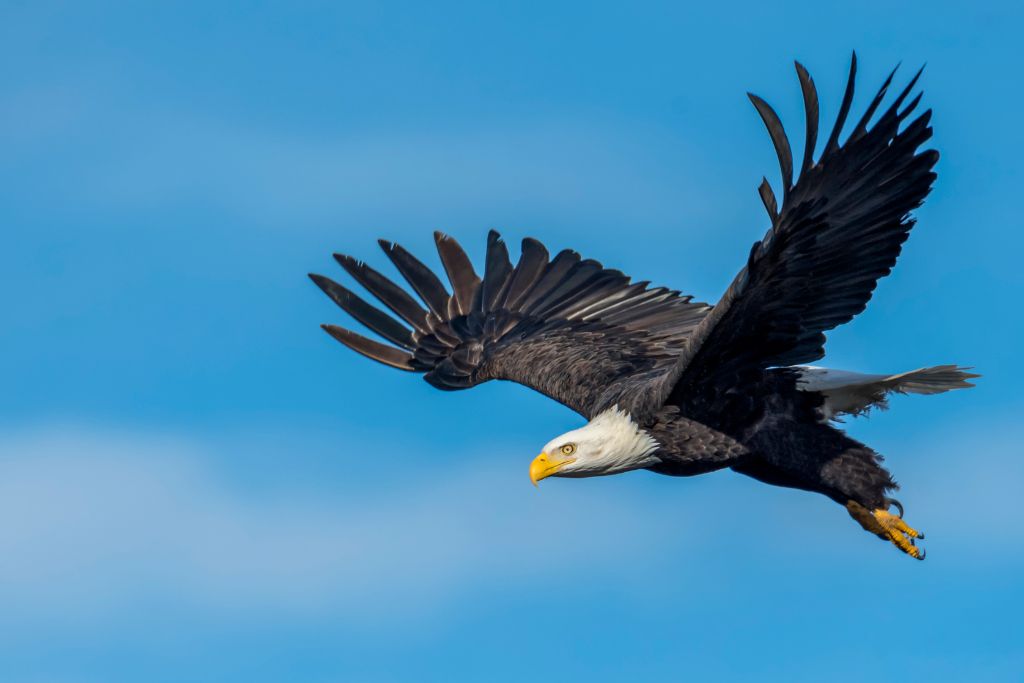Are you intrigued by the world of birds of prey? Ever wondered what sets hawks apart from eagles? Want to know why understanding these differences matters?
In the skies above, hawks and eagles rule as majestic predators. Hawks, often smaller, excel in agility and speed. They usually hunt smaller prey and are more commonly found in various habitats.
Eagles, on the other hand, are larger and more powerful. They dominate their territories and often go for bigger prey, such as fish and small mammals.
Understanding the distinctions between hawks and eagles is essential for conservationists as well as birdwatchers. There is a special place for every bird in its ecology. Eagles help keep aquatic habitats healthy, and hawks keep rodent populations in check.
By understanding these birds better, we can protect them more effectively, ensuring they continue to soar high and keep our environments balanced.
From Mountains to Cities: Hawk vs. Eagle Nest & Habitat Diversity

Have you ever spotted a soaring bird of prey and pondered where it calls home? Hawks and eagles, while sharing the skies, exhibit striking differences in their habitat preferences and nest-building practices.
Hawks, versatile and adaptable, thrive in a wide array of environments. They can be found in forests, grasslands, and even cities, showcasing their ability to coexist with human landscapes.
Eagles, on the other hand, are more selective in their choice of abode. They predominantly favor mountainous terrain, forested areas, and coastal regions, seeking expansive, open spaces.
The distinction between hawk nests and eagle nests is remarkable. Hawks typically construct their nests in elevated trees or perched upon cliffs, emphasizing their preference for elevated vantage points.
Eagles build massive nests called “aeries” that can be as heavy as a car. These nests are placed really high in tall trees or on rocky cliffs. They nests are incredibly strong, and some of them last for many years, showing how dedicated eagles are to the places where they choose to make their homes.
Found on continents including North America, Europe, Asia, and Africa, hawks demonstrate an impressive capacity to adjust to various environments. Their adaptable characteristics empower them to flourish in a range of different places.
Eagles, conversely, confine their presence mainly to regions like North America, Eurasia, and Africa. Some eagle species are even more restricted, residing exclusively in specific areas, as exemplified by the Bald Eagle’s association with North America.
Physical Structure: Difference Between a Hawk and Eagle

Have you ever looked up and wondered if that soaring bird is a hawk or an eagle? Their physical traits can give you the answer. Let’s dive into the key differences that set these raptors apart.
| Physical Characteristics | Hawk | Eagle |
| Size | Smaller, 18-30 inches | Larger, 30-40 inches |
| Wingspan | 3.3 to 4.9 feet | 6 to 8 feet |
| Body Structure | Lighter, more streamlined | Heavier, robust build |
Hawks are generally smaller, with a length ranging from 18 to 30 inches. Eagles outsize them, often measuring between 30 and 40 inches.
When it comes to wingspan, hawks usually spread their wings between 3.3 and 4.9 feet. Eagles boast a more impressive wingspan, ranging from 6 to 8 feet.
Body structure also varies. Hawks have a lighter, more streamlined build, while eagles are heavier with a robust structure.
Hawk vs. Eagle: Feeding Habits and Diet
Hawks use their keen eyesight to spot prey from high above. Once they lock on, they swoop down at incredible speeds to snatch their meal. Their talons are sharp and strong, perfect for grabbing. Hawks usually go for smaller animals like mice, squirrels, and small birds.
Eagles employ a different hunting strategy. They often soar high and use their powerful vision to spot prey. Once they see a target, they dive down with immense force, using their strong talons to capture it. Fish, rabbits, and even other birds are typical meals for eagles.
Hawks prefer land-based prey, while eagles often go fishing. Eagles also hunt larger animals, thanks to their greater size and strength. Both birds are opportunistic and will eat carrion if fresh food is scarce.
In summary, hawks and eagles have distinct hunting methods and diets. Hawks are agile and quick, focusing on smaller prey. Eagles use their size and strength to capture larger, more varied meals.
Exploring Hawk and Eagle Differences in Behavior
Hawks are generally solitary creatures. They fiercely defend their territory and build nests in high trees or cliffs. During mating season, pairs of hawks may perform intricate aerial displays.
Eagles value their space but are more likely to form long-term bonds with mates. Their nests, or aeries, are massive structures they often return to yearly. Some eagle species even live in small family groups.
Both birds have unique behavioral adaptations. Hawks can rotate their heads almost 180 degrees, giving them a wide field of vision. Eagles, conversely, have specialized feathers that reduce noise during flight, making their hunting more efficient.
In terms of social structure and behavior, hawks and eagles differ significantly. Hawks are more solitary, while eagles often form lasting bonds and have more complex social interactions.
Hawk vs Eagle: Conservation Status

Hawks are generally not endangered, but some species face habitat loss and hunting threats. The red-tailed hawk, for example, is abundant, but the Hawaiian hawk is listed as endangered.
Eagles face similar challenges. The bald eagle, America’s national bird, has made a comeback from the brink of extinction but still requires monitoring. The Philippine eagle, on the other hand, is critically endangered.
Several hawk and eagle species are at risk due to human activities. Conservation efforts are underway for both, but eagles often receive more attention due to their iconic status.
In the grand scheme, hawks are less endangered than eagles. However, both face threats that require ongoing conservation efforts.
Human Cultural Significance: Hawks and Eagles Differences
Beyond their roles in nature, hawks and eagles have special meanings in human societies, highlighting the unique hawk and eagle differences and their distinctive nests.
For Native American tribes, hawks are like messengers and symbols of sharp vision, emphasizing their role as hawk and eagle difference. In Ancient Egypt, they were connected to Horus, a sky god.
In the United States, the bald eagle is the symbol of freedom and strength, underlining the significant hawk and eagle difference. Many Native American groups believe eagles are sacred messengers between people and the divine.
Final Thoughts
Learning how hawks and eagles are different is more than just a lesson in spotting. These birds have different jobs in their environments, such as controlling the number of rodents or keeping the water healthy. By knowing what makes them different, we can protect them better.
FAQs
Who is Stronger: Eagle or Hawk?
Eagles are generally stronger due to their larger size and more powerful build.
Can an Eagle Defeat a Hawk?
Yes, an eagle can defeat a hawk, especially in a territorial dispute, because of its greater strength.
Can an Eagle Take Down a Hawk?
Yes, eagles have the strength and size to take down a hawk if they feel threatened or are competing for food.





